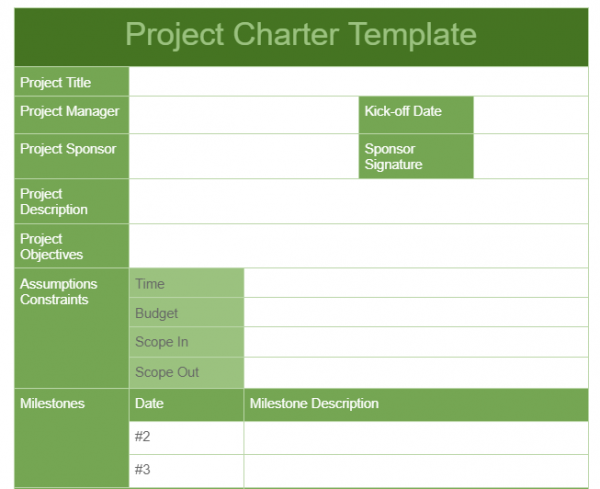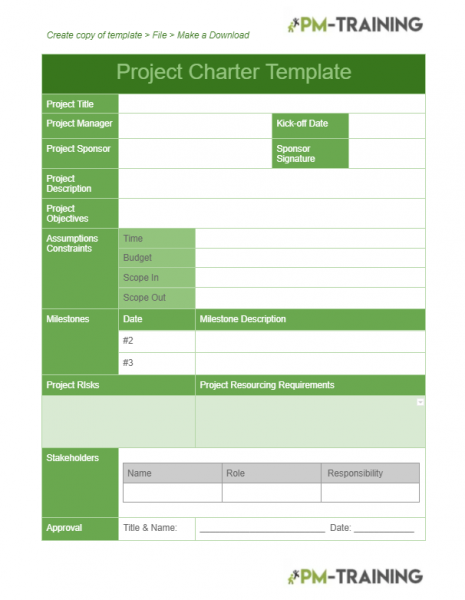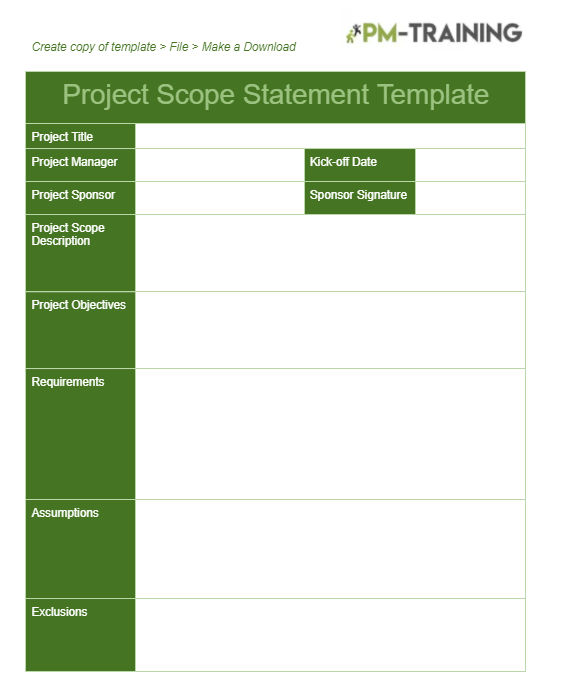A project charter document is the formal authorization that shows the scope of a project, the development of the project, project objectives, and the roles and responsibilities of all the parties that actualize the project. Using a project charter template helps keep the structure and acts like roadmap that guides all parties that take part in the actualization of a project.
The project charter should be an extension if the project statement of work where the vision, objectives, sponsors, high-level requirements and assumptions were documented and approved. When you craft a perfect project charter, it will help you determine the value of a project. Further, because it acts as a map, it save you time and gives your budget the clarity it deserves. With the charter, your team will have the necessary guidelines they need to carry out different tasks.
As a project manager, the charter gives you confidence as you have everything well set out. In instances where there is no charter or the charter is sloppy, your team will be demotivated. So, plan for success by crafting a charter before the project begins.
Project Charter Document Definition

A good project charter template outlines all the areas you need to consider for the charter. Here is what you need to know about project charters and templates. Full charter document definition:
The project charter is the document issued by the project initiator or sponsor that formally authorizes the existence of a project and provides the project manager with the authority to apply organizational resources to project activities. It documents the high-level information on the project and on the product, service, or result the project is intended to satisfy.
PMBOK 4.1.3.1
What are the elements of a project charter?
Purpose of the Project
This should be in the introduction of the project. It says “why” the project is important and helps set the direction for the manager, clients, and other stakeholders. When there’s a clear project purpose, one gives the project direction and makes it easier for all parties to make the necessary decisions. With the purpose set, the manager and clients are able to determine the scope of the work to be done. If the scope is too big or too small, it can stall a project from the first day.
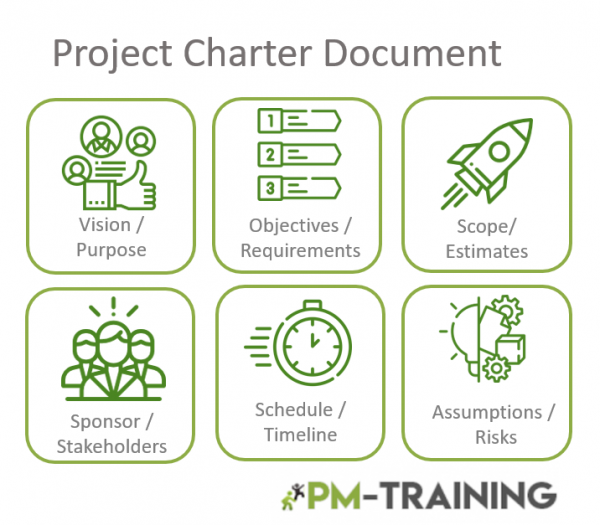
Project Objectives
This element outlines the goals and objectives of the project and the steps to be followed to achieve these goals. The clients and sponsors give their views on what they expect from the project and then strategies are put in place to ensure these expectations are met. With this well outlined, all involved parties are able to work towards the same goal. The objectives need to be specific, measurable, achievable, realistic, and also time-bound (SMART).
High-Level Project Description and Scope
The management of the organization set the project description and scope before they started implementing it. This description may already be written down, or it may still be in the minds of the executives. Writing down this description and the boundaries of the project helps the project manager understand what the creators of the project have in mind. It also helps in the setting of the budget and assessing risks and in so many other elements of the project charter.
High-Level Requirements
This section shows the expectations and requirements of the clients, sponsors, and other external stakeholders. The section also shows key deliverables that will meet the objectives of the project. With high-level requirements, the manager and other stakeholders will know the thoughts of the management or the organization regarding the project. Requirements will later be decomposed into a WBS.
Milestone Schedule
Milestones track the progress of a project at different stages. The executives may already have set milestones, either implied or wet set schedules. For instance, for a road project, the executives might require that a quarry be identified before the project begins. These milestones will define your project and what will go on at every stage. However, no matter how detailed the milestones on the project charter are, you still need to create a detailed project schedule during the project planning stage.
Summary of the Budget
Organizations run projects on a strict budget. Adding a summary of the budget on the project charter helps you identify any budget constraints and address them during the project planning phase. The organization executives or clients will already know how much they are willing to spend on the project and that can be your guide when you start the project. A more detailed budget will be created during the project planning stage.
List of Stakeholders
You will not have a list of all project stakeholders on the project charter. However, you need to have a list of those stakeholders that are of primary importance to the project you are handling. The primary client and any parties affected by the project need to be on this list. You will work very closely with these stakeholders during the implementation of the project.
Roles and Responsibilities
The project manager should be named first in the project charter. This ensures that everyone understands who is in charge. From there, other positions need to be filled and the roles and responsibilities matrix. In a horizontal management structure, it might be challenging to know who does what. As such, establish who will sign off the resources and set each member of the project with a specific position. You also need to set the deliverables and the parties responsible for these deliverables.
Sponsor
The sponsor is the client. This is the person just above the project manager and who gives all the directions to be followed. They will be the main contact between the manager and the client. The name of this sponsor and their responsibilities need to appear on the project charter.
Assumptions and Expected Challenges
Assumptions can stall a project. These assumptions, when not foreseen, can bring the lead to several project issues. Most of the assumptions are known to the management of the organization even before the start of the project. Once written down, the manager and the stakeholders will create strategies to help them deal with any unforeseen challenges that may arise due to assumptions. The prices of products may change, companies may fall out of business, technologies may change, and the needs of a project may also change. Being cognizant of these facts and so many others helps managers and stakeholders get ready for the project.
High-Level Risks
Every project has a certain level of risk that defines it. For instance, a website may have a security glitch in the payment system, making the organization lose money. A construction project may have a structural integrity issue that may see it fail and so many others. The management will have thought about some of these risks before they started implementing the project. How a manager handles these risks determines the success or failure of a project.
When the stakeholders are excited about a project, they might end up overlooking some of the risks that come with such projects. As a project manager, you need to see beyond the few risks that may have been brought forward and outline several other risks that need to be avoided. However, this section should not take part in project risk analysis. You still need to analyze the risks in a more in-depth manner.
Project Approval Process
Depending on the project you are carrying out, you need approval from a government authority. The approvals may take time, and they have a significant effect on the success of the project. You need to explicitly state the approval process and requirements on the charter. Although you will still need to create a more comprehensive list of requirements, having this simple list helps you ready the needed documents to get the approval process started.
Project Charter Template Free Download
To ensure you do not forget one or more of the charter elements, you need a project charter template. With a project charter template, you and other project stakeholders will only need to fill out the details and you are good to go.
Project Charter Template Excel


Statement of Work vs Project Charter
The project charter is a document that starts off the project. It ensures that all parties involved in the implementation of a project have the same understanding. Crafting a project charter requires strategic plans, statement of work (SOW), contractual conditions, company culture, financial position, and several other factors.
With the project charter, you have a summary of almost all the details that will see the project through. You still need to do a comprehensive project plan, but you will have all the summaries here to guide you. Think of the project charter as an organizational chart that passes authority from the executives to the lowest level in the project implementation.
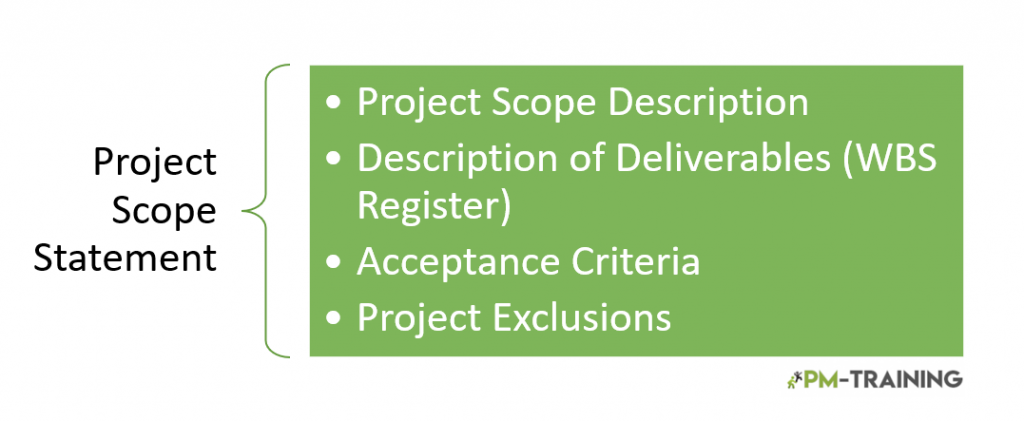
A statement of work (SOW) is a description of the expected end results, according to the PMBOK Guide. It acts as a checklist of what needs to be achieved by the time the project is done. The client sets the SOW as a list of everything needed for the project. If, for instance, you need a swimming pool in your backyard, you will give the specifications you need for the swimming pool, starting with the orientation, the size, the materials, and so many other details.
At the end of the project, the client will check the project against the SOW. However, as a project manager, you have to help your client develop a comprehensive SOW using your knowledge and experience in managing projects. A SOW should overlap with the project charter.
Project Charter FAQs
What are the 3 main parts to a project charter?
A project charter has an overview of the project, the SOW, and the organization structure showing roles and responsibilities.
What does a project charter template?
The project charter template is a document prepared with ready fields showing the different elements of a project charter. You only need to do your research and fill up the fields. This way, you never forget a single element.
How do you write a project charter?
As a project manager, you write the charter in consultation with the client. You also have to do your own research to identify assumptions and probable risks.
What is a project charter?
A project charter is a document that shows the summary of an entire project from the goals and objectives to the budget and the organizational structure. It acts as a guide to the project manager, the clients, and everyone else involved in the project.
Why are project charters useful?
A project charter is a formal document authorizing the start of a project. It acts as a guide to the project manager and a reference for the future. During project planning, the manager and the client can refer to the budget, risk, and constraints summaries on the charter
Do the clients need a project charter?
Not only is the charter important to the manager but also to the clients. Your clients will know exactly what to expect from a project, and they can use the charter as a marketing tool.
Who creates the project charter?
The project manager, in consultation with the client and other stakeholders, creates the charter and ensures it is followed. There are so many elements of the charter and so much research to undertake.

